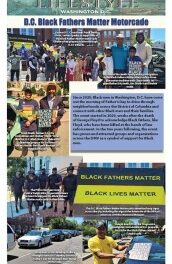By Frank McRae | Contributing Writer
“Regeneration,” a herculean presentation of African American achievements in film covering almost three quarters of a Century, is enlightening, educational, inspiring and, perhaps most of all, visibly challenging for every racial demographic audience, as well.
It is also a tribute to scores of African American film makers and actors who were not only pioneers in depicting the flavor and zest in black life and culture, but men and women who dramatized the agony and despair of their people’s generational battle against economic, social and political bondage.
The exhibit, featuring film clips, archival footage, photographs, memorabilia and even a huge poster hawking “Birth of a Nation,” D. W. Griffiths’ white supremacist tool that incited mass violence against blacks, are on display until next Spring at the Academy Museum of Motion Pictures in Los Angeles’ Fairfax District.
Set in seven spaces on the Museum’s fourth floor, the exhibit opened on August 21 and includes three rows of photos of 51 noted black actors. Most of them are less well known than such super stars as Sidney Poitier, Dorothy Dandridge, Lena Horne, Harry Belafonte and Paul Robeson, but all, in their respective time periods, were masters of their craft.
To honor one of the earliest black film entrepreneurs, the exhibit highlights William D. Foster’s “The Railroad Porter,” which, in 1912, was the world’s first motion picture with an all black cast. The director was also black, which represented another first in the film industry.
Foster, who died suddenly in Los Angeles in 1940, had long planned to create “high class” films for black audiences, but was constantly stymied by a perpetual lack of funds. Among his most noteworthy legacies was in advocating cinema to strengthen the ladder of African American social and political mobility: “Nothing has done so much to awaken the consciousness of the colored man in the United States as the motion picture. It has made him hungry to see himself as he has come to be,” Foster accurately predicted.
Three all black film companies established in Los Angeles, from 1918 to 1927, were also given space–The Lincoln Motion Picture Company, Loyalty Film Company and the Rosebud Film Corporation, respectively.
On late Saturday afternoon, August 27), a News Bay Observer writer spoke with two African American women, D’ Ann Howard, 53, and Eden Howard, 23, who were among the hundreds who’ve walked through the exhibits since it opened last week.
Eden, when asked to speak to the exhibit’s impact, said, (it) “spoke to me because” (through it), “I was able to see the beauty and rich history that comes with black cinema and film making.” Her only criticism, Eden said, was her “wish that the exhibit was longer, but I enjoyed seeing everything, nevertheless.”
She, along with other film buffs, would likely thrill to a lager space dedicated to the incomparable exploits of Paul Robeson
Although the exhibit’s scope is deep and broad, Paul Robeson, propelled to global fame as Otello in the shakespearean play, has only a small niche, but not one that even begins to encompass his singular genius in film and on stage.
Robeson, a giant of a man in generosity and genius, opened doors for numerous blacks in film and on stage. Poitier and Belafonte were just two of them; both are now icons in film while Robeson’s legacies have largely been buried or over looked.










